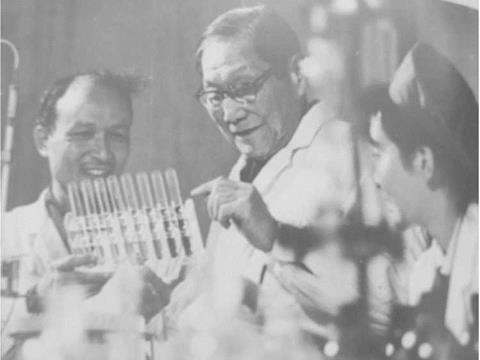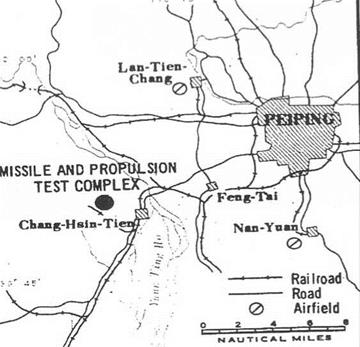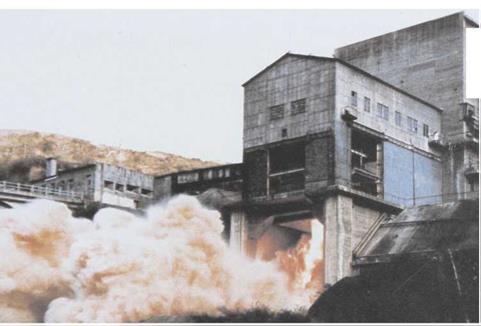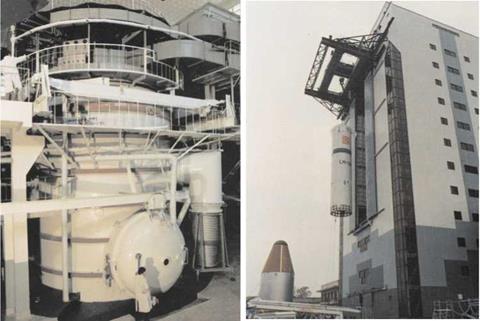The program
This chapter looks at how the current space program was constructed – its organization, institutes, architecture, infrastructure, ground facilities, cosmodromes, rockets, and rocket engines – starting with the people who made it all possible: the designers and their institutes.
DESIGNERS, BUREAUS, AND ARCHITECTURE
The leader of the Chinese space program was, as we have seen, in its early years Tsien Hsue Shen. The Chinese program followed a model of development that had similarities to the Soviet one, based on the concept of design institutes and chief designers (glavnykonstruktor, in Russian). Whether the system was consciously imitative or arose from a common political inspiration is not known. Either way, in the Chinese system, a number of chief designers emerged, as did various institutes and design bureaus, though there was a much more remote connection between designers and individual bureaus. As was the case in the Soviet Union (1946), an original group of chief designers was formed in China (1956), with key scientists assigned to projects and specialisms (e. g. engines, computers, radio systems, propellants). To the present, individual chief designers are associated with key projects, such as Qi Faren (Shenzhou). The original designers have since retired, although, in keeping with the Chinese tradition of longevity, many have lived and still live to old age and retain a lively interest in their former occupation. While Tsien Hsue Shen will always remain the great designer, in recent years, China has come to recognize other designers and scientists who have made big contributions to the Chinese space program; 2009, for example, saw the presentation of state awards to mathematician Gu Chaohao, who calculated the trajectories for the early space missions and Zhukovsky graduate spacecraft designer Sun Jiadong.
A second imitative feature of the Chinese space program was that it was carried out by sonorous-sounding institutes that concealed their true identity (the Soviet program was directed by the “ministry of medium machine-building”). There was no equivalent of NASA in the early years: the space program was run by the Fifth Academy from 1956 and by the Seventh Ministry from 1964. The Fifth Academy
B. Harvey, China in Space: The Great Leap Forward, Springer Praxis Books,
DOI 10.1007/978-l-4614-5043-6_3, © Springer Science+Business Media New York 2013 was formed by the drafting in of approximately 1,000 engineers and military officers, most of whom knew nothing about spaceflight but who quickly made up for it by hard study, but now the space program can call on skilled scientists and administrators from the universities. Not until 10th June 1993, when the Chinese National Space Administration (CNSA) was formed, did the Chinese space program have a visible governmental face. Organizationally, it was part of the structure of the State Commission for Science, Technology and the National Defence (COSTIND).
The body responsible for space policy and oversight body is the Space Leading Group of the State Council (formed in its current shape in 1991), which comprises senior governmental officials (the prime minister; the chairman of COSTIND; the vice-chairman of the State Committee for Science and Technology; the minister of the aerospace industry; the vice-minister of foreign affairs; and the vice-chairman of the state committee for central planning) which reports to the president. The CNSA reports to the Space Leading Group, as does the Central Military Commission, which manages the cosmodromes and tracking system, and the Human Spaceflight Office, which oversees the manned program [1].
Underneath the CNSA are the institutes or academies, so-called because they operate under the China Academy of Sciences. As is the case in the Soviet Union and parts of Europe, most scientific and engineering development takes place in scientific institutes, rather than in universities, as is the case in Britain and the United States. These are the main academies:
1. Chinese Academy of Launch Technology (CALT), in Nan Yuan, Beijing;
2. Chinese Academy of Mechanical and Electrical Engineering (CCF), in Beijing;
3. Chinese Electro-mechanic Academy (CHETA), in Haiying;
4. Chinese Academy for Solid Rocket Motors (ARMT), in Xian;
5. Chinese Academy of Space Technology (CAST), in Beijing;
8. Shanghai Academy for Spaceflight Technology (SAST), in Shanghai;
9. Chinese Academy for Space Electronics Technology (CASET), in Beijing;
10. Chinese Academy of Aerospace Navigation Technology;
11. Academy of Aerospace Liquid Propulsion Technology (AALPT).
The most eminent are CALT, CAST, and SAST. The Chinese Academy of Launcher Technology (CALT), originally called the Beijing Wan Yuan Industry Corporation (1957), is located in Nan Yuan, 50 km south of Beijing, and was once, like equivalent Soviet facilities, secret and closed to visitors. It has responsibility for the design, construction, completion, and delivery of the Long March launchers and has six factories in Beijing and Shanghai. CALT has its own railway termini: rockets are assembled horizontally then transported by rail to the appropriate launch site. CALT is also responsible for testing materials, parts, and components, and has its own static halls, vibration test towers, and engine test stands.
The China Academy of Space Technology (CAST) (1968) is the primary body that designs and manufactures scientific and applications satellites. Its core is the Beijing Satellite Manufacturing Plant in Beijing, formerly the Science Instruments Plant of the Chinese Academy of Sciences. Like the old Soviet facilities, there are gleaming interiors inside a shell of unattractive exteriors and the plant includes a museum of backup and unflown satellites. New spacecraft integration hangars, test facilities, and laboratories were built in the 1990s on a fresh 100-ha site in Tangjialing, north-west Beijing. A 7,000-m2 lunar section was opened in late 2009. The total CAST workforce was given in 2003 as 110,000 of which 41,000 were of technical grade [2]. CAST has a substantial infrastructure, the main elements of which are:
• Beijing Centre for Space Technology Development and Testing, with integration hall, electro-magnetic compatibility laboratory, mechanical environmental laboratory, KM6 space environment simulation laboratory, mass properties test laboratory, compact radio test field, acoustic laboratory, and electron welding systems;
• National Centre of Engineering Research for Small Satellites and Applications, sub-divided into design, test, and integration centers;
• Dong Fang Hong Satellite Co.;
• Integrated Centre for Recovery and Landing Research;
• Centre for Optical Remote Sensing Engineering;
• Centre of Specialized Technologies;
• Centre for Control and Propulsion Systems Design;
• Satellite Manufacturing Factory;
• Institute of Space Scientific and Technological Information;
• Institute of Space Machinery and Electricity;
• Beijing Institute of Control Engineering;
• Beijing Institute of Metrology and Test Technology; and
• Beijing Institute of Satellite Information Engineering.
As was the case with the Soviet design bureaus, it has branches outside Beijing such as:
• Xian Industrial Park, for the development of communications systems, microwave payloads, and applications, including Xian Institute of Radio Technology (XIRT);
• Tianjin Industrial Base;
• Yantai Industrial Base for the development of satellite electronics;
• Lanzhou Industrial Base, for the development of cryogenics and tanking;
• Lanzhou Institute of Space Technical Physics;
• Shantou Institute of Electronic Technology;
• Shanxi Institute of Space Mechanical and Electrical Equipment; and
• Shandong Institute of Space Electronic Technology.
To complicate the story, institutes have been renamed and transferred from one academy to another. XIRT, for example, which played a lead role in satellite electronics, was an independent academy when formed in 1956, but was transferred to CAST in 1968.
After CAST, the largest bureau is the Shanghai Academy of Space Technology (SAST), sometimes loosely referred to as “the Shanghai bureau”, set up 1961 by
Mao Zedong in Minhang, Shanghai, China’s leading industrial base, where an old tobacco hall was requisitioned. It was assigned major projects from the 1970s, such as the Feng Bao launcher and, since then, key tasks of the space program such as the Long March 2D and 4 rockets and important parts of Shenzhou (e. g. propulsion module, electrical systems, command and communications, and the main engine) and there is a full-scale mockup of Shenzhou on display there. Rockets are not the only product of the SAST, which has 10 commercial companies and has branched out into defense equipment, cars, office equipment, machinery, electrical products, and even property management. There was a substantial, 80-ha expansion of its Minhang facility (also called Minxing) from 2005 as a “Space Industrial Park”, with a large part dedicated to the manned spaceflight program. Also located in Shanghai is the Shanghai Institute for Satellite Engineering (Hauyin), which first built the Ji Shu Shiyan Weixing (JSSW) series of satellites (Chapter 2) and then the Feng Yun weather satellites (Chapter 6), and is well endowed with high-quality technical facilities such as vacuum chambers and a centrifuge. Also located there are the State Meteorology Administration and the Shanghai Institute for Technical Physics (established in 1958).
Dealing with the other academies, ARMT (1962) in Xian makes solid-rocket motors, kick stages, apogee engines, retrorockets for the Fanhui Shi Weixing (FSW) recoverable cabins and other small rockets, and the escape tower for Shenzhou. The tenth academy, the Chinese Academy of Aerospace Navigation Technology (2001), was formed to bring together a dispersed and uncoordinated range of small companies and institutes involved in the design and production of inertial instruments, optoelectronic products, electrical and electronic components, precision instruments, and computer hardware and software in navigation and guidance systems.
Liquid-fuel rocket engines were originally made in what was originally called the “067 base” in Mount Qinling in Shaanxi (though 1970 is given as its date of formation). Broadly speaking, its role corresponded to that of the Gas Dynamics Laboratory, now Energomash in the Russian space program. The company diversified in recent years in this case into such areas as fire-fighting, environmental protection, electronics, machinery, and electronics. A subsidiary, the Shaanxi Space Dynamics High Technology Co., was set up to apply rocket engine technology across a broad range of economic sectors. The various liquid-propulsion laboratories, 067 base, the Beijing Aerospace Propulsion Institute, the Beijing Institute of Aerospace Testing Technology, and the Shanghai Institute of Space Propulsion were brought into a new academy in 2009 in Xian: the Academy of Aerospace Liquid Propulsion Technology (AALPT), with 11,400 staff.
These are the main academies. In addition, there are many smaller institutes and centers, most of which operate under the broad aegis of the China Academy of Sciences, some emerging only in recent years. Examples are:
• Centre for Earth Observation (CEODE);
• National Astronomical Observatories;
• National Satellite Meteorology Centre;
• China Resources Satellite Application Centre (CRESDA, 1991);
• Satellite Oceanic Application Centre;
• National Space Science Centre (NSSC); and
• Lanzhou Space Research Institute.
One of the newest (2011) is the National Space Science Centre (NSSC), to take responsibility for planning space science, appointing Ji Wu as its first director – a move designed to both prioritize space science and bring coherent planning to the field. The NSSC took over the former Centre for Space Science and Applied Research (CSSR), in turn constituted from Zhao Jiuzhang’s Institute of Applied Geophysics (1958) which later became the Institute of Space Physics, with the Centre for Space Science and Technology (1978), and it has 507 staff. It has responsibility for research, design, assembly, coordination, and scientific support, and includes post-doctoral students. CSSR holds the China Space Science Data Centre and is the home of the China committee of COSPAR. It is responsible for Miyun ground receiving station, Hainan ionospheric observatory, the Beijing Cosmic Ray Observatory, the Beijing super neutron monitor, the sounding rocket base in Hainan, and the space plasma environment test laboratory. In 2011, it was allocated a budget of ¥300m (€38m), but with a view to this growing to ¥700m. Its staff complement was set at 450, including 50 scientists.
In advance of manned spaceflight, an Institute for Aviation & Space Medicine (many variations of this name appear) was established in Beijing (1968), led by China’s great expert in aviation and space medicine, Cai Qiao (1897-1990). From Jieyang in Gungdong, he studied psychology and then medicine in California and Chicago, subsequently in London and Frankfurt, returning to China after the revolution, becoming the author of six major books and over 100 papers, his main text being the ABC of Aviation Medicine. The institute became responsible for the development of spacesuits, underwater tanks to test space walking, and centrifuges to prepare astronauts for high gravitational forces on ascent and descent. The Institute for Aviation and Space Medicine built a 12-m, computer-controlled centrifuge able to reach a maximum acceleration of 25 G, while the Shanghai Research Institute of Satellite Engineering built a 15-m-long centrifuge, the biggest in Asia, which can achieve 17 G. Adjacent facilities work on water recycling, closed Ufe-support systems, growing food in space, and bed-rest research.
As was the case in Russia, production may be carried out in-house or contracted to specialized external production institutes or factories (e. g. Tung Fang Scientific Instrument Plant), but China also had an intermediate organizational type: the inhouse specialized company, an example being the Dong Fang Hong Satellite Co., a medium-sized company of 450 staff, part of CAST. Shanghai had a concentration of production facilities, such as the Shanghai Electronic Equipment Factory (electronics); Xinyue Mechanical Electronics Plant (gimbaling systems and precision instruments); and the Scientific Instrument Factory (sensors).
In 2009, there was reorganization around industrial parks, bringing together a diverse range of companies derived from the different institutes. The main parks developed were in Shenzhen, Xian, Shanghai, Tianjin, and Hainan. Several CAST
|
Ciao Qiao, father of Chinese space medicine. |
facilities were consolidated in Xian, such as the AALPT, the Institute of Space Physics, and the North West Institute for Electronics. The main anchor companies in Shenzhen Park were Shenzhen Aerospace Spacesat Company and Shenzhen Aerospace Science & Technology, starting with a ¥160m (€20m) facility of 250,000 m2.
The principal communications satellite companies are Asiasat, Sinosat, and Chinasatcom, which includes APT (Asia Pacific Telecommunications Co.) Satellite of Hong Kong (Apstar), the last two being subsidiaries of CAST (they are described in detail in Chapter 5). The main computer companies are Beijing Shenzhou Aerospace Software Co., China Aerospace Times Electronics Corp., China Spacesat Co., and China Aerospace Engineering Consultation Centre.
Traditionally, satellites were constructed in-house or in subsidiary companies, but they were joined by university-based companies in the 1990s. Tsinghua Satellite Technology Company specialized in micro-satellites and space imaging. Sounding like a typical Western university-commercial company, it was a joint enterprise of China Space Machinery and Electrical Equipment Group, Tsinghua University Enterprise Group, and Tsinghua Tongfang Co. Located in Zhongguancun Science & Technology Park, Tsinghua Satellite Technology Company quickly found a Western partner to work with – the university-based Surrey Satellite Technologies Limited (SSTL), which operates on a broadly similar basis. Its aim is to develop China’s autonomous micro-satellite research capability in a short period of time and build high-performance, low-cost space applications satellites, especially in such areas as weather observations, disaster prevention, environmental monitoring, and cartography.
On top of these, the China Aerospace Corporation (CASC) (1989) has overall authority for the main industrial groups concerned with spaceflight, notably the Great Wall Industry Corporation (1984), its promotional agency at home and abroad. The Great Wall is a multi-product promotional agency, its current portfolio including, as well as space rockets, bicycles, beer, safes, home-made ice-cream machines, and electric fans. It leads the drive to promote Chinese launchers and other space products, at one stage having offices in California, Washington, DC, and Munich, Germany.
Two universities are now dedicated to spaceflight – the only country in the world with such a distinction, both called universities of aeronautics and astronautics: Nanjing and Beijing. The latter has 23,000 students and is one of the main research centers for both theory and the practical development of new projects (e. g. it has an altitude chamber in which spacesuits are tested). Prospective astronauts study there. For amateurs, there is the Chinese Society of Astronautics (CSA), which attempts to bring together engineers, scientists, amateurs, and enthusiasts for spaceflight. It is the body affiliated to the International Astronautical Federation, although, in the best traditions of science and politics, there is a rival Chinese Society of Aeronautics and Astronautics. In 1992, China joined the international committee on space research, COSPAR, originally set up after the International Geophysical Year to bring together the scientists of the USSR, United States, and Europe in the postSputnik period. China has a national committee for COSPAR, which furnishes triennial reports on its space science activities to COSPAR headquarters in Paris.














